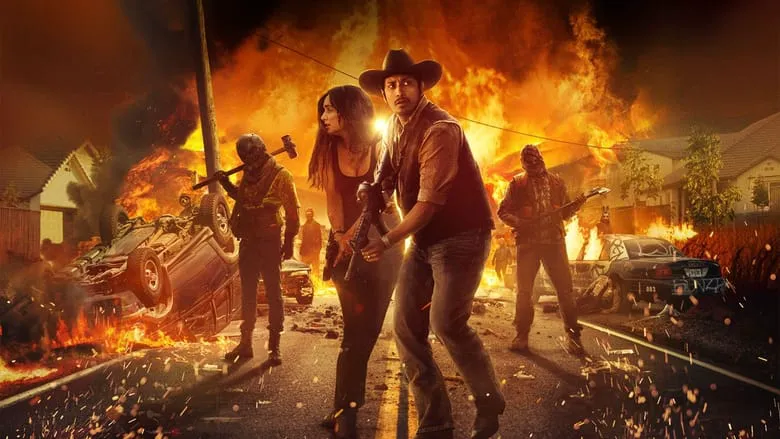Exploring the Moral Maze of “The Purge” Series
“The Purge,” which began as a series of successful and provocative films, expanded its reach into the realm of television, building on the cinematic franchise’s established premise and fanbase. The series, which currently counts two seasons, while perhaps not delivering the same level of heart-pounding suspense and visceral thrills as its big-screen counterparts, compensates with a more expansive narrative canvas. This allows for a deeper exploration of complex themes related to human nature, societal structures, and the pervasive nature of violence.
The Dichotomy of Human Nature: Good vs. Evil
One of the most compelling aspects of “The Purge” is its examination of humanity’s intrinsic nature. Are we, at our core, fundamentally good, or is there an inherent darkness lurking within us all? This age-old philosophical question is explored through the actions and motivations of the series’ characters.
Eastern philosophies often subscribe to the notion that humanity is inherently good, suggesting that our experiences and the process of learning serve as a protective shield for our innate innocence. It’s a constant endeavor to “wipe away the dust” that accumulates and obscures the purity of the heart. In contrast, much of Western thought tends to lean towards the idea that humanity is inherently flawed, requiring constant self-discipline and societal structures to suppress the “demon” that resides within, preventing it from escaping and unleashing chaos.
The series provides a stark example of this internal struggle. Consider the young man who, on Purge night, initially ventures out simply to take a photo with a friend, seeking a thrill rather than intending harm. Fate intervenes, and he is thrust into a situation where he is forced to kill in self-defense, an act that sets off a devastating chain of events. Initially, he attempts to manage his trauma by killing animals, seeking an outlet for the overwhelming stress and guilt. However, this escalates, leading to the unintended killing of an elderly man. As the situation spirals out of control, he becomes consumed by darkness. After the tragic loss of his girlfriend, severing his remaining emotional attachments, the “demon” within is unleashed, transforming him into a monster, consumed by rage and a thirst for violence. This character arc raises the unsettling question: Is evil a force that, once awakened, is almost impossible to contain? Perhaps it’s a beast best left undisturbed.
Violence: A Vicious Cycle or a Path to Order?
Another crucial theme explored in “The Purge” is the complex relationship between violence and its potential outcomes. Does violence inevitably breed more violence, perpetuating a never-ending cycle of bloodshed and revenge? Or can it, paradoxically, lead to a state of peace, albeit a potentially terrifying one? Each annual Purge night witnesses an increasing number of participants, engaging in acts of mutual slaughter and retribution, further entrenching individuals and communities in the cycle of violence.
However, the series also hints at the possibility that when violence reaches an extreme threshold, it might force one side into complete submission, crushing their will to resist and rendering them as defenseless as lambs. This raises the unsettling prospect of a peace achieved through sheer terror and oppression. Historically, regimes characterized by extreme brutality have sometimes proven less susceptible to internal collapse, while transitions towards openness and democracy often carry a degree of inherent risk.
The Paradoxical Nature of Tolerance
Tolerance is widely regarded as a virtue, a cornerstone of a just and compassionate society. But “The Purge” forces us to confront a difficult question: can tolerance, in certain circumstances, become a vice? Can excessive tolerance, even with the best intentions, ultimately cause harm to others?
In the series, a doctor’s initial commitment to tolerance serves to protect himself and his family, showcasing his admirable character. However, his tolerance also has devastating consequences. His leniency towards a neighbor nearly results in the death of his wife, and his compassion for a young man ultimately leads to the murder of over a dozen medical staff members.
The series seems to suggest that for those who are unrepentant in their evil, tolerance is misplaced. They should be eliminated to protect the innocent. To repay evil with kindness is to ultimately betray those who deserve our kindness and protection. This is a complex and uncomfortable moral dilemma that resonates long after the credits roll.